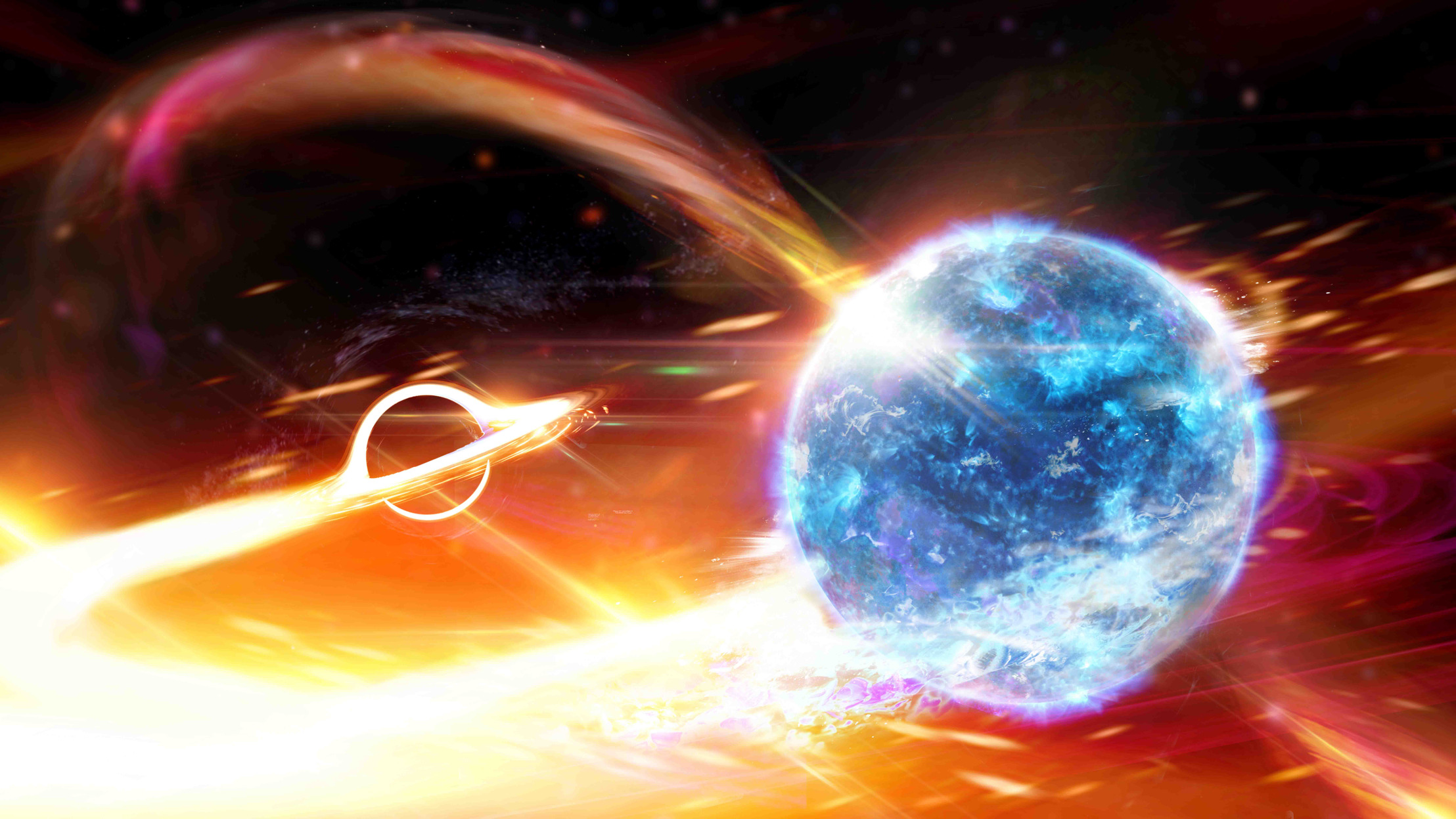Astronomers might have spotted a black hole gobbling up a neutron star

Scientists have spotted the most exotic gravitational waves on record yet, after a black hole probably lunched on a neutron star.
The news: On August 14, the Laser Interferometer Gravitational-Wave Observatory (LIGO) in the US and the Virgo observatory in Italy detected new gravitational waves rippling through spacetime. They were produced 900 million light-years away by a black hole devouring what is either a neutron star or some object we never thought was possible.
1% uncertainty: The team has an automated system that instantly classifies gravitational wave events. This one was unusual. It showed that one object smaller than three solar masses had plunged into another object larger than five solar masses. We’ve never seen a neutron star larger than 2.2 solar masses, nor a black hole smaller than five solar masses, so scientists are 99% certain this event was caused by a neutron star being swallowed up by a black hole. However, there is still a very slim chance the neutron star is just a black hole—the smallest on record—and that this event is just another merger of two black holes.
What’s next: Soon after detection, Australia’s SkyMapper Telescope scanned the sky for a visual sign of the merger (such as the neutron star’s insides that had been ripped out by the black hole) but found nothing. Other telescopes, like NASA’s Swift instrument, might spot some telltale evidence later.
Gotta catch ’em all: Before this exotic signal, dubbed S190814bv, we’ve only ever seen gravitational waves produced by black hole mergers or neutron star mergers. If the findings hold, they will complete the holy trinity of gravitational wave events scientists have pursued all this decade, and confirm the existence of a bizarre new kind of star system.
The Airlock, our space newsletter, is coming back soon! Get ready by signing up for free here.
Deep Dive
Space
How to safely watch and photograph the total solar eclipse
The solar eclipse this Monday, April 8, will be visible to millions. Here’s how to make the most of your experience.
How scientists are using quantum squeezing to push the limits of their sensors
Fuzziness may rule the quantum realm, but it can be manipulated to our advantage.
The great commercial takeover of low Earth orbit
Axiom Space and other companies are betting they can build private structures to replace the International Space Station.
Stay connected
Get the latest updates from
MIT Technology Review
Discover special offers, top stories, upcoming events, and more.